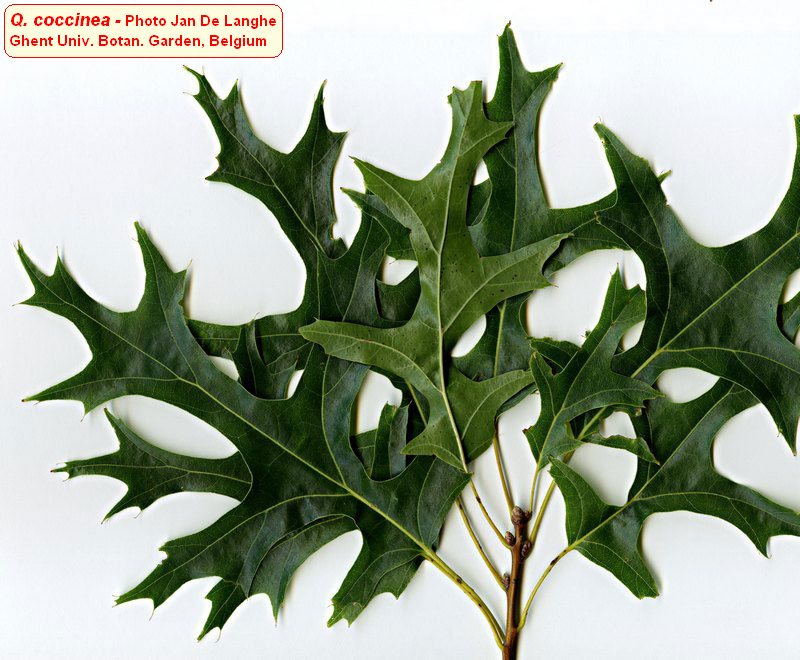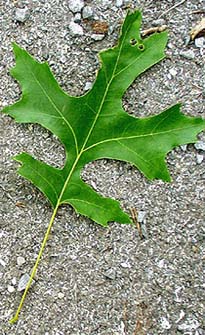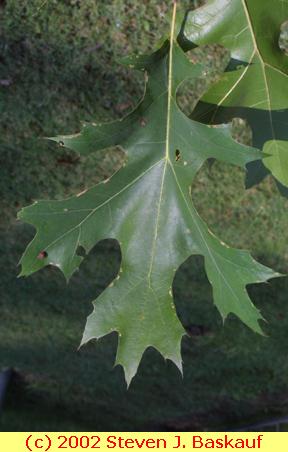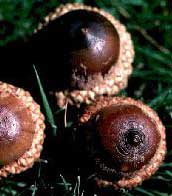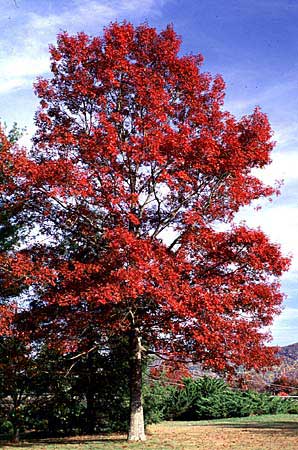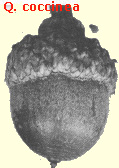| Quercus coccinea | |
| Author | Muenchh. 1770 Hausvater 5: 254 1770. |
| Synonyms | coccinea
var. tuberculata Sargent 1922 coccinea var. rugelii A.DC 1864 repanda hort. |
| Local names | scarlet oak |
| Range | Eastern
USA; to 1500 m; introduced in Europe in 1691; |
| Growth habit | reaches
25 m tall; lower part of the trunk without dead wood; |
| Leaves | 7-20 x 5-13 cm; oboval or oval; base truncate or slightly cuneate; 3-5 lobulate lobes each side of the midrib; lobes paired often unequally; terminal lobe more important (longer and/or larger); veins not always opposite, ending into bristle-tips; rather deep sinuses, widely rounded; lustrous dark green above, paler beneath with prominent whitish veins; both sides lustrous and glabrous except sometimes some brownish axillary tufts beneath; purplish at fall; petiole slender, hairless, yellow, 2.5-6 cm long; |
| Flowers | in
spring; male catkins 6-8 cm; |
| Fruits | acorn
sub-globulous or ovoid, 1.2-2.5 cm, red brown, rarely striate; sessile
or short-stalked; enclosed 1/2 or 1/3 by cup; cup half-round, deep, thin-edged,
shiny, often with warted scales; maturing in 2 years; |
|
Bark, twigs and |
bark
grey, warty, finely fissured into reddish inside scales; twigs red brown
above, olive beneath, glabrous, angled, with lenticels; bud ovoid, pointed,
hairy (Q. palustris has glabrous buds), with apically light red
brown edged scales, 4-7 mm long; |
| Hardiness zone, habitat | hardy; prefers acidic soils; fast growing; |
| Miscellaneous | --
Sub-genus Quercus, section Lobatae, Series Coccineae; -- Different from other red oaks in the rounded sinuses and the large central lobe; -- Hybridizes with Q.ilicifolia (= x robbinsii), Q.velutina (= x fontana), Q.palustris ; |
| Subspecies and varieties |
--
cultivar 'Splendens' shows conspicuous autumn colors ; cultivated
since 1893;
|
| Pictures |
|
